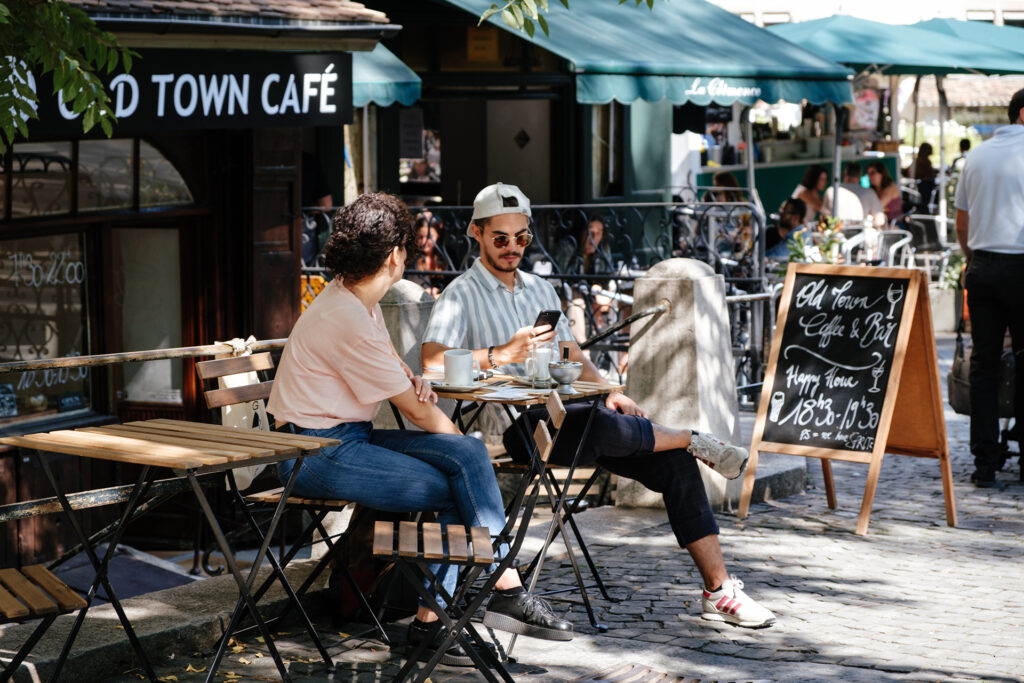Randy White, one of the world’s foremost authorities on the creation of leisure, entertainment and experience venues, maps out the future of OOH E&A.
There’s no doubt that the novel coronavirus has upended just about every facet of life as we knew it, including causing a total disruption to out-of-home entertainment and arts (OOH E&A). It has been an accelerant to many trends that were already underway, as well as creating some new ones. Here’s my rundown of the 21 most significant trends and changes that will shape the post-pandemic OOH E&A landscape, from 14-8. Read trends 21-15 here.
14. Fewer younger adults and children

In addition to a very likely continuing decline of births and a resulting decline in young children, moving forward to 2030, the number of age 10-19 children will decline by 3.6 million and the number of age 20-39 adults will decrease by 1.7 million. Meanwhile, the number of middle-age 40-59 adults will increase.
What this means for OOH E&A: The declining number of younger adults will affect OOH E&A, as they have traditionally been the prime market for many attractions. The growing number of older adults offers new opportunities for business models that target them.
13. Childless households

The percentage of households with children is currently at a historic low, down from one-third in 2000 (33%) to only one-quarter of all households in 2019 (26%). The percentage of households with children five and younger is down by one-fifth. Not only is the percentage down, but the actual number of families with children is down by two percent compared to an almost one-quarter increase (23%) in the number of all households over the same two decades. The decline of families with children means that, on average, a smaller share of households in any market have children. The accelerated decline in the birth rate will likely accelerate the continuing decline of families with children.
What this means for OOH E&A: The shrinking number of families with children will also negatively impact those OOH E&A venues that target the family market.
12. Working from home continues

Before Covid, research shows that 5% of paid workdays took place at home. During the pandemic, that increased to 62% in May. As of the end of October, it was down to 40%. The research projected that working from home (WFH) would continue at a 22% post-pandemic rate.
300 U.S. employers polled in October by Willis Towers Watson said they expect 30% of their full-time employees will be working from home in three years, up from 5% three years ago. Abolfazi Mohammadian, director of the Transportation Laboratory at the University of Illinois in Chicago, estimates 18% of workers will likely WFH every day in the post-pandemic era. WFH skews heavily higher socioeconomic during the pandemic and is projected to remain that way post-Covid.
WFH increases available time for other activities by nearly one hour a day (56 minutes on average) due to the elimination of commuting. WFH also results in transportation cost savings. Even after offices fully reopen, people that return to work full or part-time should also expect some time savings. With fewer people commuting to work each day and with workers having more flexibility to commute at off-peak times, commute times should be less than pre-pandemic.
What this means for OOH E&A: Many entertainment venues located near professional and white-collar office concentrations, as well as in the heart of major city centers, especially the eatertainment ones, captured considerable lunchtime and after-work business. With many people working part or all of the time at home, that portion of the business will decrease. Willis Towers Watson’s research found that worker spending in major city centers could decline by 10% post-pandemic.
Conversely, both the community savings and additional time saved from WFH and shorter commutes might be used for attendance at OOH E&A, especially for higher socioeconomic workers, who will be the large majority of WFH workers and who traditionally have the least amount of leisure time. Another possible positive result is that many companies may find a need to hold more corporate events at OOH E&A to bring all their workers together for social and team-building activities.
11. Retreat from the cities

Millions of Americans fled big cities in droves to escape the virus. The main driver is that people want more space, prompting moving to luxury, suburban, and rural homes. Others have been moving from expensive megacities like NYC and San Francisco to mid-tier, less expensive cities like Madison, WI, and Austin, TX. Many of them are relocating permanently.
Gallup found in their surveys that when adults were asked, “If you could live anywhere you wished, where would you prefer to live?, the percent answering in a town or rural area climbed from 39% in 2019 to 48% in 2020. Marketing firm Known found that 6% of adults were planning to move due to Covid-19. They found people are looking for more space and to be in a community more aligned with their values.
With the K-shaped recovery, more affluent people are doing well. They are more able to work remotely, and they are mainly the ones relocating. This means that in some larger urban areas, the business OOH E&A was getting from these people will be lost, while business will be gained in other cities and areas.
10. Greater awareness of sustainability

The devastation wrought by Covid has had an impact on consumer attitudes regarding environmentally responsible behavior: both their own and that of companies they expect to patronize. A BCG survey found that in the wake of the pandemic, people are more concerned – not less – about addressing environmental challenges, and are more committed to changing their behavior to advance sustainability.
Some 70% of worldwide survey participants said they were more aware now than before Covid that human activity threatens the climate, and that degradation of the environment in turn threatens humans. Nearly two-thirds of U.S. respondents (64%) said environmental issues are as concerning or more concerning than health issues.
Nearly three-quarters in the U.S. (72%) said private companies should integrate environmental considerations into their products and services and the way they operate. Research also shows that people with higher education levels and millennials are more concerned with sustainability and environmental issues and more likely to behave in environmentally-friendly ways.
What this means for OOH E&A: Environmentally friendly behavior by businesses will drive many peoples’ OOH leisure choices. Millennials and higher-educated people show the greatest environmental concerns, and they are the overwhelming majority of the now bifurcated OOH E&A market.
9. The return of restaurants

Pre-Covid, dining out had been elevated to an experience that many younger adults considered more desirable than an entertainment offering. A YPulse 2016 survey found that nearly 8 in 10 millennials (78%) prefer going out to a restaurant to other options, including various entertainment venues. Pre-pandemic, some of the fastest-growing and most successful location-based entertainment (LBE) concepts were eatertainment venues that incorporated high-quality, foodie-worthy food and drink as their anchor attraction, with the entertainment being secondary.
Research by Technomic before Covid found that in a world where technology often replaces face-to-face interactions, consumers seek greater connection to others and the world around them. They’re looking at restaurant experiences as a way to forge deep, meaningful social connections with friends and family, no different than our ancestors did. 75% of surveyed adults agreed with the statement “I enjoy the social aspects of dining out at restaurants”. 76% also agreed that “Visiting restaurants is a form of entertainment for me”.
Datassential reports from their recent December survey that when people were asked what they were looking forward to once vaccinated, 58% said “going out to restaurants”. It was only second to “getting with friends and family at somebody’s house” and much higher than OOH leisure events such as going to the movies, attending a live show at a club or music hall, or attending a live sporting event.
Two-thirds reported they plan to visit restaurants more once vaccinated (67%). One-third of millennials (34%) said they plan to go right away. A December 31 – January 6, 2020 survey by CivicScience also found that people missed going out to restaurants and bars second only to gathering with friends and family. Physical contact and hugging, which goes hand in hand with seeing loved ones, came in third.
During the pandemic, people were cooking more and introducing new international spices such as turmeric, saffron, and cumin to their dishes to add variety to their meals and travel with their taste buds. McCormick & Co reported a 35% increase in the sale of spices and herbs. When consumers start dining out again, the predictions are they will quickly move past an initial desire for comfort food back to adventure and discovery food and drink exploration.
Covid increased people’s concerns with health and wellness, which translates into the choice of healthier and functional foods (have a positive effect on health beyond basic nutrition, such as increased immunity) for many people. Many people also discovered plant-based meats when regular meat supplies disappeared from supermarkets during the pandemic’s early days. Plant-based meat sales have since continued to grow.
Post-pandemic, restaurants should continue to have a strong, probably heightened, appeal for many years as they check off so many boxes – they offer food and drink discovery and adventure and are an in-person, socially shared experience that is sharable on social media, so missed during the pandemic. Evolution did not program us to bowl, whack golf balls, play escape games, visit a museum, or watch a theatre performance. Although some of those activities are social, they lack the primal “gather around the campfire while you dine, drink and socialize” predisposition.

What this means for OOH E&A: There will be an increased emphasis on in-person socialization. Peoples’ priorities for what type of OOH experiences they choose are likely to change. Having been physically and socially isolated from friends and family for so long, one decisive deciding factor will be a craving for highly social IRL experiences. This will include food and drink experiences, which are very social. The social aspect of meeting up and sharing food and drink together is typically more important than the food and drink itself. When asked to remember their most memorable meal, most people can’t remember everything they ate, but they remember who they were with.
Of all OOH leisure venue experiences, restaurants are missed the most. They were the most frequent OOH experiences people had pre-pandemic and are sure to continue post-pandemic. A significant majority of people prefer visiting restaurants over attending entertainment venues. Health, wellness, and sustainability will have heightened considerations for the venues people choose to visit and the foods they select. Plant-forward menus, functional food, and reduction of food waste are just a few of those considerations.
Another essential element is highly social experiences, not the shared ones like going to the movies sitting side-by-side, but ones where people do things IRL face-to-face, such as interactive social games. The perfect formula is when food and drink can be enjoyed while participating in social games. Think of social eatertainment experiences such as boutique bowling and social driving ranges such as Top Golf.
8. Residual fears around health and hygiene

The coronavirus can change our societal norms, as our fears will linger long after a crisis like the pandemic fades. When people worry about something long enough, new institutions and cultural patterns form, making it more likely they will worry about the same thing in the future. Before 9/11, 24% of Americans were very or somewhat worried about being harmed by terrorists; that percentage increased to 58% after 9/11. Over the next two decades, though the U.S. experienced relatively few deaths due to terrorism, that level of worry never receded to its pre-9/11 levels. In late 2019, the percentage of Americans who were very or somewhat worried about terrorism stood at 46%, nearly double the pre-9/11 level.
Fears that might linger after the pandemic crisis fades include residual fears of physical proximity around strangers and touching communal surfaces. People are conditioned to worry about viruses and germs lingering on just about everything involved with the once-ordinary experiences – doorknobs, ketchup dispensers, bathroom surfaces, even tabletops. We may have a generation of virus-phobes.
According to surveys of 15,000 Americans reported in the research paper Why Working from Home Will Stick, about 70% of survey respondents expressed a reluctance to return to some pre-pandemic activities even when a vaccine for Covid-19 becomes widely available, for example riding subways and crowded elevators, or dining indoors at restaurants. A December 18-21, 2020 Harris Poll found many people are planning to continue many of their acquired pandemic behaviors post-pandemic.

We’ve seen many new practices and equipment adopted by businesses centered around hygiene, such as self-cleaning surfaces, ultraviolet capabilities introduced on appliances, and completely new technologies like hygiene haptics promise mid-air interaction. Regular disinfection of shared surfaces is an SOP for most consumer businesses. The adoption of these has raised the bar for what is considered a safe environment for your health. It’s easy to see how heightened concerns about disease brought on by Covid could calcify into American culture, customs, and institutions. Hygiene, health, and physical distance will be primary concerns.
What this means for OOH E&A: Depending on the degree to which residual fears survive the pandemic, there could likely be a redistribution of demand amongst different types of OOH E&A compared to pre-pandemic. The ability to control your distancing from strangers and outdoor versus indoor environments could be influencing factors.
There will be an expectation for higher levels of cleanliness. This means that the newly adopted hygiene standards at businesses will likely have to remain in place in perpetuity, no matter the cost. People will almost irreversibly uphold a heightened sensitivity for proper cleaning practices in public areas, or practically any other space utilized by strangers. And they will inevitably judge your property on this, whether consciously or not. A lack of pristine sanitization SOPs will lead to strongly negative reviews, unlike in months or years past where a guest may have let it slide or only docked a single star.
Missed part one? Read trends 21-15 here.
And don’t miss the next instalment! Sign up to the WXO newsletter (in the box below) and we’ll let you know when we drop the final part of Randy’s insights on key trends that’ll impact experiences in 2021.






